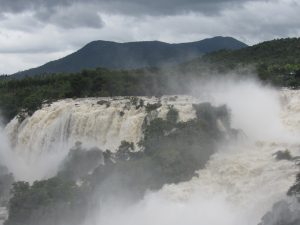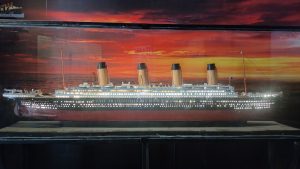History of Sri Vijaya Puram
Govt Of India has decided to rename the capital of Andaman Nicobar to Sri Vijaya Puram. More details are https://indianexpress.com/article/explained/explained-history/port-blair-sri-vijaya-puram-cholas-9566312/
Formarly, Port Blair, the capital of the Andaman and Nicobar Islands, is located in the southeastern part of the South Andaman Island in the Bay of Bengal. This vibrant town is not just an administrative hub but also a place steeped in historical significance, especially due to its association with colonial rule, the Indian freedom struggle, and its unique indigenous culture. The story of Port Blair is intertwined with the wider history of the Andaman Islands, which were home to indigenous tribes long before colonial powers took interest in the area.
Ancient Times and Indigenous Tribes
The Andaman Islands, including the area around Port Blair, have been inhabited for thousands of years by various indigenous tribes. The Great Andamanese, the Onge, the Jarwa, and the Sentinelese are among the tribes that have called these islands home for centuries. These groups lived in isolation from the outside world and developed their unique culture, language, and way of life, maintaining their hunter-gatherer lifestyle.
Although there is limited recorded history of the islands before European arrival, archaeological evidence suggests human habitation going back as far as 2,200 years. These tribes lived in small, nomadic communities and had little interaction with the outside world. Due to their isolation, the indigenous peoples of the Andaman Islands were largely unaffected by the political and historical developments on the Indian subcontinent for centuries.
Early Encounters and Colonial Interest
The first recorded contact between the Andaman Islands and outsiders came in the 9th century when Arab traders passed by the islands. However, it was the European colonial powers who first seriously considered the potential of the islands. The Portuguese arrived in the 16th century, followed by the British and Danish East India Companies in the 18th century.
However, it was not until the 18th century that the British East India Company took a more serious interest in the Andamans. In 1789, the British, under the command of Lt. Archibald Blair, established a colony on Chatham Island near the present-day Port Blair. This settlement was initially called Port Cornwallis after Admiral William Cornwallis. However, the settlement was abandoned within a few years due to high mortality from diseases like malaria and unfriendly interactions with the indigenous tribes.
The British Re-establishment: Cellular Jail and Penal Colony
In 1857, following the Indian Rebellion (also known as the First War of Indian Independence), the British saw the Andaman Islands as an ideal place to house political prisoners and rebels. In 1858, the British re-established Port Blair as a penal colony, marking the beginning of its association with punishment and exile.
The most iconic symbol of British rule in Port Blair is the infamous Cellular Jail, also known as “Kala Pani” (meaning Black Water), which was constructed between 1896 and 1906. The jail was designed in a cellular structure to maximize isolation, with each prisoner housed in solitary confinement. The British sent hundreds of Indian political prisoners to this remote outpost, including notable freedom fighters like Veer Savarkar, Batukeshwar Dutt, and Sachindranath Sanyal. The Cellular Jail became synonymous with suffering, as prisoners were subjected to harsh conditions, forced labor, and extreme isolation.
The penal colony also extended to Ross Island, the British administrative headquarters for the Andaman Islands during this time. Ross Island housed British officials and their families in a relatively luxurious setting compared to the harsh conditions of the Cellular Jail.
The Role of Port Blair in the Indian Freedom Struggle
Port Blair, particularly the Cellular Jail, became a significant symbol in India’s freedom struggle. The jail housed many prominent political prisoners who were fighting against British rule in India. Many of these prisoners were subjected to severe torture and were often executed, making the jail a place of both martyrdom and resistance.
The memory of the sacrifices made by these freedom fighters has become an enduring part of the history of Port Blair. Today, the Cellular Jail is a national memorial, attracting visitors from all over India who come to pay tribute to the freedom fighters who were imprisoned and martyred there.
World War II and Japanese Occupation
During World War II, the strategic location of the Andaman and Nicobar Islands drew the attention of the Japanese forces. In 1942, the Japanese occupied Port Blair and much of the Andaman Islands, taking control from the British. The occupation of Port Blair by Japanese forces was a critical period in its history. The Japanese renamed Port Blair as “Shaheed Dweep” (Martyr Island) and Ross Island as “Swaraj Dweep” (Self-Rule Island).
Netaji Subhas Chandra Bose, the leader of the Indian National Army (INA), visited the Andaman Islands during the Japanese occupation and raised the Indian national flag for the first time on Indian soil in December 1943. This event is historically significant as it symbolized Indian aspirations for independence.
However, the Japanese occupation was marked by brutality. Many residents of Port Blair and the surrounding areas were subjected to harsh treatment, and thousands were killed or tortured during the occupation. The Japanese rule in the islands was a dark period, and it lasted until the end of World War II when British forces reoccupied the islands in 1945.
Post-Independence Era
After India gained independence in 1947, the Andaman and Nicobar Islands, including Port Blair, became a part of the newly independent nation of India. Initially, the islands were administered by the Chief Commissioner of the Indian government. In 1956, the Andaman and Nicobar Islands were declared a Union Territory of India, with Port Blair as its capital.
Port Blair has since grown into an important administrative and cultural hub. Over the years, the city has developed infrastructure, including schools, hospitals, and government buildings. Despite the modernization, Port Blair has managed to retain much of its natural beauty, and it has become a popular tourist destination.
The Cellular Jail, once a place of immense suffering, has been preserved as a national monument. It now serves as a reminder of the sacrifices made by India’s freedom fighters and the country’s long struggle for independence. The Light and Sound Show at Cellular Jail has become one of the most iconic representations of Port Blair’s history, narrating the poignant tale of the struggles faced by the inmates.
Modern-Day Port Blair
Today, Port Blair is a thriving city and the gateway to the Andaman Islands. Its airport and harbor link it to the rest of India, making it a key point of entry for both tourists and residents. The city is home to a diverse population, including descendants of the convicts sent to the Cellular Jail, settlers from the Indian mainland, and the indigenous people of the Andaman Islands.
Tourism has become one of the major industries in Port Blair, with visitors coming to explore its rich history, pristine beaches, and natural beauty. Apart from the Cellular Jail, other attractions in and around Port Blair include Ross Island, Viper Island, and the Mahatma Gandhi Marine National Park.
The history of Port Blair is a blend of colonial legacy, indigenous culture, and the Indian struggle for independence. Its transformation from a penal colony to a vibrant city reflects the resilience and enduring spirit of its people. Today, it stands as a reminder of both the suffering endured during colonial times and the sacrifices made in the pursuit of freedom.






